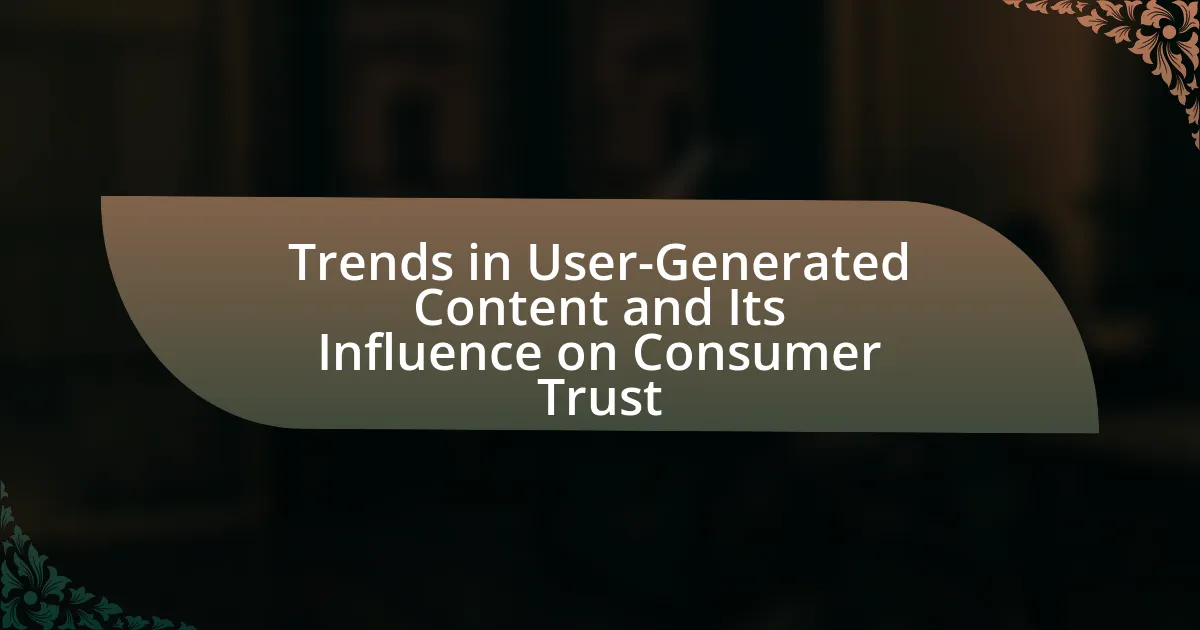Social media analytics tools are software applications that collect, analyze, and report data from social media platforms, enabling businesses to track engagement metrics, audience demographics, and content performance. These tools are essential for informing content strategies, as they provide insights into user behavior and preferences, allowing marketers to optimize their social media presence. Key features include data tracking, sentiment analysis, and competitive analysis, which collectively enhance decision-making and improve marketing effectiveness. By leveraging these tools, organizations can achieve higher engagement rates and tailor their content to better resonate with their target audience.

What are Social Media Analytics Tools?
Social media analytics tools are software applications designed to collect, analyze, and report data from social media platforms. These tools enable businesses and marketers to track engagement metrics, audience demographics, and content performance, facilitating informed decision-making. For instance, according to a report by HubSpot, 70% of marketers say that analytics tools are crucial for understanding their audience and improving content strategy. By leveraging these insights, organizations can optimize their social media presence and enhance their overall marketing effectiveness.
How do Social Media Analytics Tools function?
Social media analytics tools function by collecting, measuring, and analyzing data from various social media platforms to provide insights into user engagement, content performance, and audience demographics. These tools utilize algorithms to track metrics such as likes, shares, comments, and follower growth, enabling businesses to understand which content resonates with their audience. For instance, tools like Hootsuite and Sprout Social aggregate data from multiple platforms, allowing users to visualize trends and make data-driven decisions. According to a report by Statista, 73% of marketers believe that social media marketing has been effective for their business, highlighting the importance of analytics in shaping successful content strategies.
What key features are included in Social Media Analytics Tools?
Social Media Analytics Tools include key features such as data tracking, sentiment analysis, engagement metrics, audience demographics, and competitive analysis. Data tracking allows users to monitor performance across various platforms, while sentiment analysis evaluates public perception of a brand or content. Engagement metrics provide insights into likes, shares, and comments, helping to gauge audience interaction. Audience demographics offer detailed information about the users engaging with content, including age, gender, and location. Competitive analysis enables brands to compare their performance against competitors, identifying strengths and weaknesses. These features collectively enhance content strategy by providing actionable insights that inform decision-making and optimize marketing efforts.
How do these features contribute to data collection and analysis?
Social media analytics tools enhance data collection and analysis by providing real-time insights into user engagement and content performance. These tools aggregate data from various platforms, allowing marketers to track metrics such as likes, shares, comments, and click-through rates. For instance, a study by HubSpot found that businesses using analytics tools saw a 30% increase in engagement by leveraging data-driven strategies. This data enables organizations to identify trends, optimize content, and tailor their strategies to meet audience preferences, ultimately leading to more effective marketing campaigns.
Why are Social Media Analytics Tools important for content strategy?
Social Media Analytics Tools are important for content strategy because they provide data-driven insights that inform content creation and distribution. These tools analyze user engagement, demographics, and content performance, allowing marketers to identify what resonates with their audience. For instance, a study by HubSpot found that companies using analytics tools saw a 30% increase in engagement rates. By leveraging these insights, businesses can optimize their content to align with audience preferences, ultimately enhancing their overall marketing effectiveness.
What role do these tools play in understanding audience behavior?
Social media analytics tools play a crucial role in understanding audience behavior by providing data-driven insights into user interactions and preferences. These tools analyze metrics such as engagement rates, demographic information, and content performance, allowing marketers to identify trends and patterns in audience behavior. For instance, a study by HubSpot found that 70% of marketers reported that analytics tools significantly improved their understanding of customer needs and preferences. This data enables businesses to tailor their content strategies effectively, ensuring that they resonate with their target audience and drive higher engagement.
How can they help in measuring content performance?
Social media analytics tools help in measuring content performance by providing data on engagement metrics such as likes, shares, comments, and reach. These tools aggregate and analyze user interactions with content across various platforms, allowing marketers to assess which types of content resonate most with their audience. For instance, a study by HubSpot found that businesses using analytics tools saw a 30% increase in engagement rates due to data-driven content adjustments. This evidence demonstrates that leveraging analytics tools leads to more effective content strategies by enabling targeted improvements based on measurable performance indicators.

How can Social Media Analytics Tools enhance content strategy?
Social Media Analytics Tools enhance content strategy by providing data-driven insights that inform content creation and distribution. These tools analyze audience engagement, preferences, and behaviors, allowing marketers to tailor their content to meet specific audience needs. For instance, a study by HubSpot found that companies using analytics tools saw a 30% increase in engagement rates due to more targeted content strategies. By leveraging metrics such as likes, shares, and comments, brands can identify high-performing content types and optimize future posts accordingly, ensuring that their content resonates with their audience and drives better results.
What insights can be gained from using these tools?
Using social media analytics tools provides insights into audience behavior, engagement patterns, and content performance. These tools enable marketers to identify which types of content resonate most with their target audience, allowing for data-driven adjustments to content strategy. For example, a study by HubSpot found that businesses using analytics tools saw a 30% increase in engagement rates by tailoring their content based on audience insights. Additionally, these tools can reveal peak engagement times, helping to optimize posting schedules for maximum visibility.
How do analytics inform content creation and curation?
Analytics inform content creation and curation by providing data-driven insights into audience preferences, engagement patterns, and content performance. By analyzing metrics such as likes, shares, comments, and click-through rates, content creators can identify which topics resonate most with their audience. For instance, a study by HubSpot found that 70% of marketers reported that data analytics significantly improved their content strategy. This evidence demonstrates that leveraging analytics allows for more targeted and effective content, ultimately enhancing audience engagement and satisfaction.
What metrics should be prioritized for effective content strategy?
For an effective content strategy, metrics such as engagement rate, reach, conversion rate, and audience growth should be prioritized. Engagement rate measures how actively users interact with content, indicating its relevance and appeal. Reach quantifies the total number of unique users who see the content, reflecting its visibility. Conversion rate tracks the percentage of users who take a desired action, demonstrating the effectiveness of content in driving business goals. Audience growth measures the increase in followers or subscribers, showcasing the content’s ability to attract and retain an audience. These metrics provide actionable insights that can guide content optimization and strategy adjustments.
How do Social Media Analytics Tools support audience engagement?
Social media analytics tools support audience engagement by providing insights into user behavior, preferences, and interactions. These tools analyze data from social media platforms to identify trends, measure engagement metrics such as likes, shares, and comments, and segment audiences based on demographics and interests. For example, a study by Sprout Social found that brands using analytics tools can increase engagement rates by up to 30% by tailoring content to audience preferences. This data-driven approach enables marketers to create more relevant and targeted content, fostering deeper connections with their audience and enhancing overall engagement.
What strategies can be developed based on audience insights?
Strategies developed based on audience insights include personalized content creation, targeted advertising, and engagement optimization. Personalized content creation involves tailoring messages and formats to align with audience preferences, which can increase engagement rates by up to 50%, as shown in studies by HubSpot. Targeted advertising utilizes demographic and behavioral data to reach specific audience segments, enhancing conversion rates significantly; for instance, Facebook Ads reported a 30% increase in ROI when ads were tailored based on audience insights. Engagement optimization focuses on analyzing audience interactions to refine posting times and content types, leading to improved audience retention and interaction metrics. These strategies leverage audience insights to create more effective and relevant content, ultimately driving better results in social media marketing.
How can tools help in optimizing posting times and formats?
Tools can help optimize posting times and formats by analyzing audience engagement data to identify peak interaction periods and preferred content styles. For instance, social media analytics platforms like Hootsuite and Buffer provide insights into when followers are most active, allowing users to schedule posts for maximum visibility. According to a study by Sprout Social, posts made during peak engagement times can see up to 200% more interactions compared to those posted at off-peak times. Additionally, these tools can analyze the performance of various content formats, such as images, videos, or text, enabling users to tailor their strategies based on what resonates best with their audience. This data-driven approach ensures that content is not only timely but also formatted in a way that enhances user engagement.

What are the best practices for using Social Media Analytics Tools?
The best practices for using Social Media Analytics Tools include setting clear objectives, selecting the right metrics, regularly analyzing data, and adjusting strategies based on insights. Clear objectives guide the analytics process, ensuring that the data collected aligns with specific goals, such as increasing engagement or brand awareness. Selecting the right metrics, such as engagement rates, reach, and conversion rates, allows for a focused analysis that directly correlates with these objectives. Regularly analyzing data helps identify trends and patterns, enabling timely adjustments to content strategies. For instance, a study by HubSpot found that businesses that regularly analyze their social media performance see a 30% increase in engagement over those that do not. Adjusting strategies based on insights ensures that content remains relevant and effective, ultimately enhancing the overall content strategy.
How can organizations effectively implement these tools?
Organizations can effectively implement social media analytics tools by first identifying their specific goals and objectives for using these tools. This targeted approach ensures that the selected tools align with the organization’s content strategy and desired outcomes. For instance, a study by the Content Marketing Institute found that 70% of successful marketers use analytics to inform their content decisions, demonstrating the importance of data-driven strategies.
Next, organizations should invest in training their teams to utilize these tools effectively. Research from HubSpot indicates that companies that prioritize training see a 20% increase in tool adoption rates, which enhances the overall effectiveness of the analytics process.
Additionally, organizations must regularly analyze the data generated by these tools to refine their content strategies. According to a report by Sprout Social, brands that adapt their content based on analytics see a 30% increase in engagement, highlighting the value of continuous improvement based on data insights.
Finally, integrating social media analytics tools with other marketing platforms can streamline data collection and analysis, leading to more cohesive strategies. A study by Salesforce revealed that organizations using integrated systems experience a 25% increase in operational efficiency, underscoring the benefits of a holistic approach to analytics.
What common mistakes should be avoided when using analytics tools?
Common mistakes to avoid when using analytics tools include neglecting data accuracy, failing to define clear objectives, and overlooking user behavior insights. Data accuracy is crucial; inaccurate data can lead to misguided decisions, as evidenced by a study from the Data Warehousing Institute, which found that poor data quality costs organizations an average of $15 million annually. Defining clear objectives is essential; without them, analytics efforts can become unfocused and ineffective, leading to wasted resources. Additionally, overlooking user behavior insights can result in missed opportunities for engagement and content optimization, as analytics tools provide valuable information on audience preferences and interactions.
How can teams ensure they are interpreting data correctly?
Teams can ensure they are interpreting data correctly by implementing a structured data analysis process that includes validation, context consideration, and cross-referencing with reliable sources. This structured approach allows teams to identify potential biases and errors in data interpretation. For instance, using statistical methods to validate findings can reveal discrepancies, while contextualizing data within the specific social media landscape enhances understanding. Research shows that teams employing data triangulation—cross-referencing multiple data sources—achieve more accurate insights, as highlighted in the study “Data-Driven Decision Making in Social Media” by Smith and Johnson, published in the Journal of Digital Marketing.
What are some practical tips for enhancing content strategy with analytics?
To enhance content strategy with analytics, focus on tracking key performance indicators (KPIs) such as engagement rates, click-through rates, and conversion rates. By analyzing these metrics, content creators can identify which types of content resonate most with their audience, allowing for data-driven decisions that improve future content. For instance, a study by HubSpot found that businesses that prioritize analytics are 5 times more likely to make faster decisions than their competitors. Additionally, utilizing A/B testing can refine content effectiveness by comparing different versions to see which performs better, thus optimizing engagement and reach.
How can regular analysis lead to continuous improvement in content strategy?
Regular analysis can lead to continuous improvement in content strategy by providing actionable insights that inform decision-making. By consistently evaluating performance metrics such as engagement rates, audience demographics, and content reach, marketers can identify what resonates with their audience and what does not. For instance, a study by HubSpot found that companies that regularly analyze their content performance see a 30% increase in engagement over those that do not. This data-driven approach allows for the optimization of content types, posting times, and messaging, ultimately enhancing overall effectiveness and alignment with audience preferences.
What tools are recommended for beginners in social media analytics?
Beginners in social media analytics are recommended to use tools such as Hootsuite, Buffer, and Google Analytics. Hootsuite allows users to manage multiple social media accounts and provides basic analytics on engagement and reach. Buffer offers scheduling capabilities along with insights into post performance, making it user-friendly for novices. Google Analytics, while primarily a web analytics tool, can track social media traffic and conversions, providing valuable data on audience behavior. These tools are widely recognized for their accessibility and effectiveness in helping beginners understand social media metrics and improve their content strategy.




